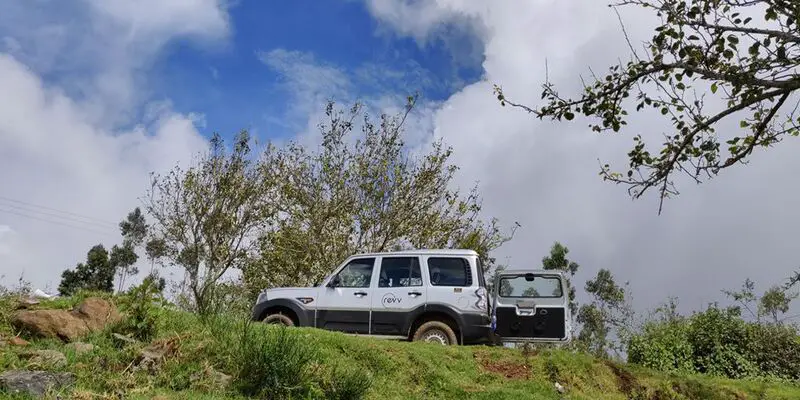Attention is paid to driving on the highways or expressways and obeying traffic rules so that all cars are always safe to travel. Suppose you are going on a solo long-distance trip or have a daily commute to work. In that case, you must acknowledge and take safety precautions to minimize the possibility of an accident.
Stay Focused and Alert
Concentrating and remaining attentive on the highways is the key to avoiding accidents and, hence, a safe drive. Interstate driving has some risks, like increased speed, shorter rest periods, and longer distances, so drivers should always stay alert. Eliminating distractions such as text messages, phone calls, and music while driving causes distractions. Keep your eyes on the road, hands on the steering wheel, and head on the game to stay alert and swiftly respond to any sudden problems.
Observe Lane Discipline
The lanes need to be properly managed, and the traffic needs to flow smoothly; reducing further highway congestion is essential. Traffic to the rightmost lane should be maintained unless overtaking a slow-moving vehicle, only to switch back to the right lane after passing. It is a good idea to avoid braking unnecessarily and switch lanes too much because the other drivers may need clarification, and there is a greater risk of collision. Always indicate your purpose of moving to another lane and look into blind spots to find other vehicles before maneuvering.
Make a Safe Following Distance
Lastly, keeping a minimal maintenance distance can effectively avoid rear-ending accidents on highways. Let's talk about the basic rule of staying at least a couple of seconds behind the vehicle in front of you. In rain or other inclement weather, when traveling fast, prepare more space (time) to respond to situations quickly. To that end, living safely away from the driver's rear end will allow you time to apply brakes should there be sudden stops or emergencies.
Adhere to Speed Limits
The speed limits are set to make roads safe and comfortable regardless of whether the roads are straight or curved, carrying many people or fewer, and the weather conditions. Follow posted highway speed limits closely; slow down to an acceptable rate depending on the traffic flow and present condition. You not only speed but also your mentality exaggerates, i.e., your attention level is reduced, and your rapid response is restricted to sudden danger.
Speed Changes Based on Weather
Traffic and road conditions may vary greatly owing to the weather, especially on highways where the speeds tend to be compared to the city traffic. Carry the same speed as a road condition with a misty, snowy, icy, or rainy to ensure the command of your vehicle and decrease the probability of skidding or hydroplaning. Make up for more brake distance and take it easy through wet or slippery surfaces.
Avoid Tailgating
Tailgating or driving too close to the vehicle in front is the most important reason for car crashes on highways, as it's a frequent issue. Doing this can prevent temporary blindness and keep a safe distance from the vehicle in the first column to avoid a rear-end collision. Overbaking increases the chance of colliding and creates unnecessary conflict between drivers and passengers. Think about keeping a good distance from other cars and being careful on the highway. They should not be like other aggressive drivers.
Watch Out for the Warning Signs

The warning signs alert you of possible hazards and road modification, with the signs providing information about the distance ahead. Scrutinize hazard indicators like sharp corners, steep slopes, woods and fields, and construction sites and act appropriately to the present situation. Disregarding caution signs, that is, letters that warn you about accidents or traffic violations, may cause those accidents, so dont ignore those warnings and move on carefully.
Follow Directional Signs
Directional signs help drivers know their way around by showing which road to leave at, which junction, and even where to get off along the highway. Follow the arrows to pick the proper route in advance without diverging to other lanes or failing to exit. Become knowledgeable of symbols often used on the signs of the streets so you can immediately identify and decipher them while driving.
Respect Regulatory Signs
One of the most important functions of the traffic sign is to notify drivers of the rules and requirements to follow while driving. These manifestations include speed limits, road markings for the designated traffic lanes, or other traffic control regulations. Be careful with signs on the road and follow instructions, as compliance contributes to the safety of yourself and other road users. Players fail to win over others. Failure to obey the traffic signs may lead to fines, penalties, or accidents, so obey traffic laws and drive on the highways.
Practice Defensive Driving Techniques

Defensive driving is increasingly about staying off the scene of accidents and incidents on the highway by being alert and foreseeing the hazards. You will either increase your and other's safety on the highways/expressways through defensive driving techniques. So, defensive driving should be an important driving behavior.
Anticipate Other Drivers' Actions
This driving style requires sharing the road with multiple drivers who are different in their driving ways and have unique driving habits and behaviors. Forecast the actions of the other drivers by checking and tracking their movements, signaling intentions, and keeping a safe distance from the drivers who display unpredictable or unsafe behavior. If the leading car moves suddenly to the left, merges, or slows down, ensure you are ready to hand over the control.
Conclusion
Highways or expressways operate under the same rules as any other roadways, although the conditions (such as increased speed limits) may be more hostile; thus, we must pay close attention, follow the traffic regulations, and employ preventive measures to arrive safely. Adhering to this approach and avoiding distractions such as texting while driving, being conscious of speeds, knowing the road signs and symbols, and adopting defensive driving habits will all help you reduce the risk and have a hassle-free driving time.




